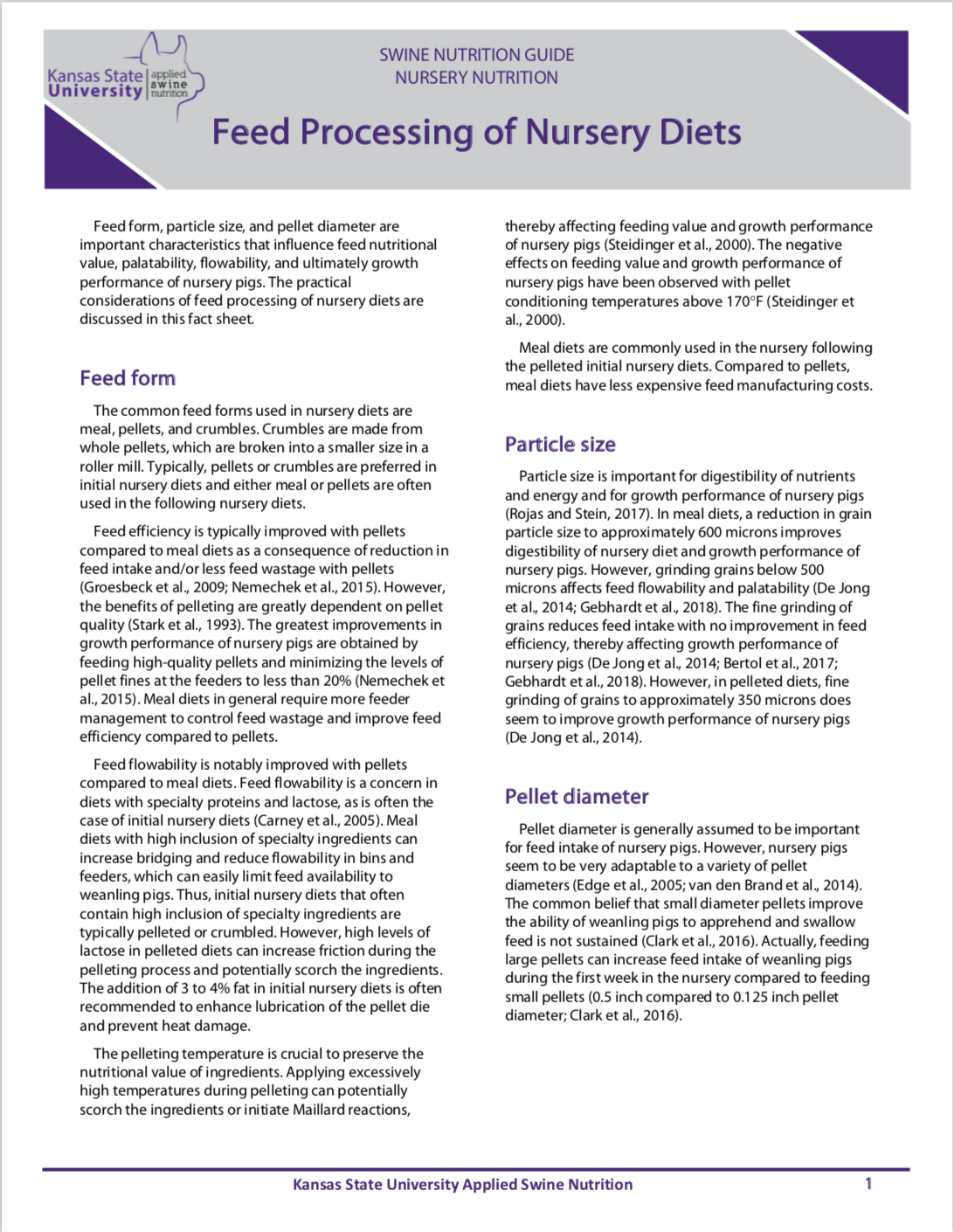Feed form
The common feed forms used in nursery diets are meal, pellets, and crumbles. Crumbles are made from whole pellets, which are broken into a smaller size in a roller mill. Typically, pellets or crumbles are preferred in initial nursery diets and either meal or pellets are often used in the following nursery diets.
Feed efficiency is typically improved with pellets compared to meal diets as a consequence of reduction in feed intake and/or less feed wastage with pellets (Groesbeck et al., 2009; Nemechek et al., 2015). However, the benefits of pelleting are greatly dependent on pellet quality (Stark et al., 1993). The greatest improvements in growth performance of nursery pigs are obtained by feeding high-quality pellets and minimizing the levels of pellet fines at the feeders to less than 20% (Nemechek et al., 2015). Meal diets in general require more feeder management to control feed wastage and improve feed efficiency compared to pellets.
Feed flowability is notably improved with pellets compared to meal diets. Feed flowability is a concern in diets with specialty proteins and lactose, as is often the case of initial nursery diets (Carney et al., 2005). Meal diets with high inclusion of specialty ingredients can increase bridging and reduce flowability in bins and feeders, which can easily limit feed availability to weanling pigs. Thus, initial nursery diets that often contain high inclusion of specialty ingredients are typically pelleted or crumbled. However, high levels of lactose in pelleted diets can increase friction during the pelleting process and potentially scorch the ingredients. The addition of 3 to 4% fat in initial nursery diets is often recommended to enhance lubrication of the pellet die and prevent heat damage.
The pelleting temperature is crucial to preserve the nutritional value of ingredients. Applying excessively high temperatures during pelleting can potentially scorch the ingredients or initiate Maillard reactions, thereby affecting feeding value and growth performance of nursery pigs (Steidinger et al., 2000). The negative effects on feeding value and growth performance of nursery pigs have been observed with pellet conditioning temperatures above 170°F (Steidinger et al., 2000).
Meal diets are commonly used in the nursery following the pelleted initial nursery diets. Compared to pellets, meal diets have less expensive feed manufacturing costs.
